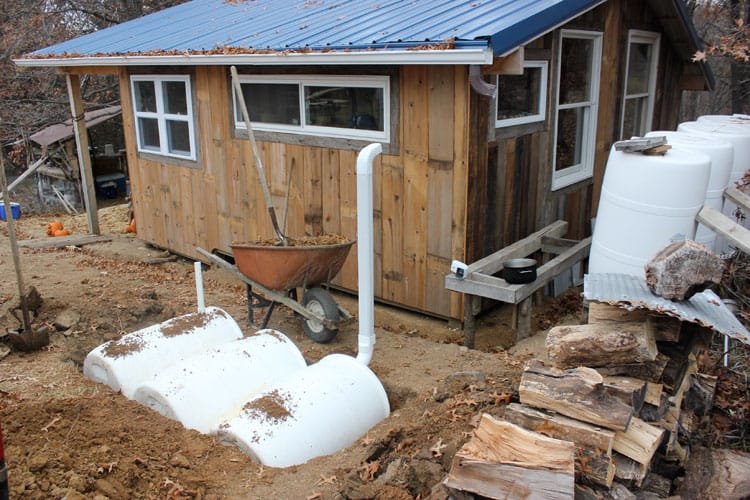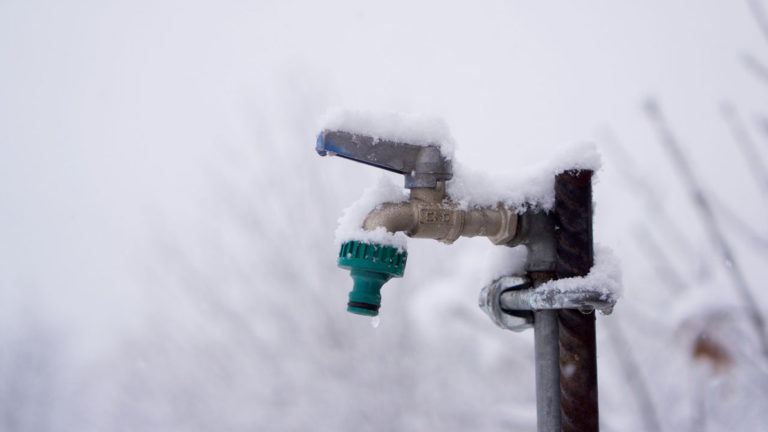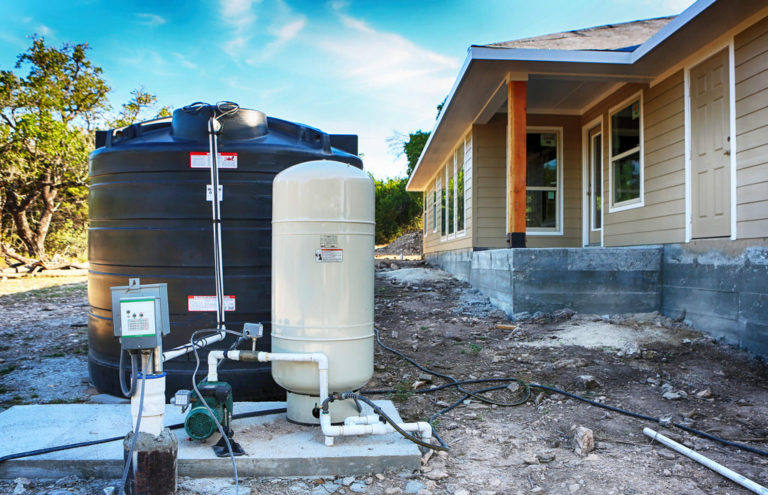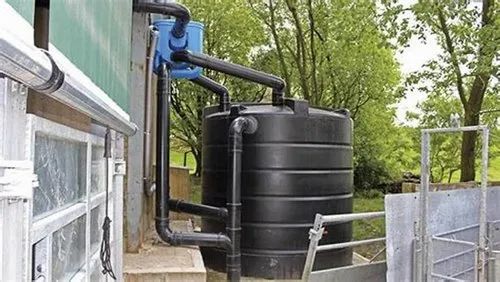Rainwater harvesting is a smart solution for off-grid homes looking to reduce their reliance on municipal water supplies.
Not only does it conserve resources, but it also provides a cost-effective way to irrigate your garden, flush your toilets, and even wash your clothes.
With a little creativity and some careful planning, you can turn rainwater into a valuable resource for your off-grid home.
Whether you’re looking to save money on your water bill or simply reduce your carbon footprint, there are countless ways to use rainwater collection to make your home more sustainable.
Let’s explore some creative ideas for using rainwater in your off-grid homestead.
Graywater System
Install a graywater system that collects and reuses water from sinks, showers, and washing machines for irrigation and flushing toilets. This can save up to 20,000 gallons of potable water per year.
This type of system collects and reuses water from sinks, showers, and washing machines for irrigation and flushing toilets.
The graywater is collected in a holding tank and then distributed to the irrigation system, toilets, or other non-potable uses.
By reusing this water, you can substantially decrease your reliance on potable water for irrigation and other non-drinking purposes.
Graywater systems can be customized to fit your specific needs and can be integrated with rainwater harvesting systems to maximize water conservation.
To install a graywater system, it is recommended to consult with a licensed plumber and follow local regulations and guidelines.
With proper maintenance, a graywater system can provide a reliable and sustainable source of water for your household’s non-potable needs.
Rainwater Harvesting
Collect rainwater from roofs and store it in tanks or cisterns for later use. This can be used for irrigation, flushing toilets, and even washing clothes.
Collecting and storing rainwater is a simple yet effective way to reduce your household’s water footprint and dependence on municipal water supplies.
By installing a rainwater harvesting system, you can collect and store rainwater from your roof in tanks or cisterns for later use.
This collected rainwater can be used for a variety of purposes, including irrigating your garden, flushing toilets, and even washing clothes.
To set up a rainwater harvesting system, you’ll need a few key components.
First, you’ll need a roof with a large enough surface area to collect a significant amount of rainwater.
You’ll also need a gutter system to collect the rainwater and direct it into a downspout or other collection device.
From there, the collected rainwater can be stored in a tank or cistern, which can be placed above or below ground.
When selecting a tank or cistern, it’s important to consider the size of your household and your water needs.
A larger tank will be necessary to support multiple users and provide enough water for your needs.
You’ll want to ensure that your tank or cistern is made of food-grade materials and is properly maintained to prevent contamination and ensure the safety of the water.
Overall, rainwater harvesting is a simple and effective way to reduce your water consumption and dependence on municipal water supplies.
With the right equipment and maintenance, you can collect and store rainwater for a variety of household uses, helping to save money on your water bills while also supporting a more sustainable lifestyle.
Rainwater Filtration
Invest in a rainwater filtration system to remove debris and contaminants from the collected rainwater, making it safe for drinking and cooking.
Rainwater filtration systems are an essential investment for any home or business that collects rainwater for drinking, cooking, or other domestic uses.
These systems are designed to remove debris and contaminants from the collected rainwater, ensuring that the water is safe for consumption and use.
Without proper filtration, rainwater can contain a range of contaminants such as leaves, twigs, and other debris that can clog pipes and appliances, as well as bacteria, viruses, and other harmful substances that can pose health risks.
By investing in a rainwater filtration system, you can rest assured that your collected rainwater is safe for use in your home or business.
These systems typically consist of a series of filters that remove impurities and contaminants from the water, including particulate matter, bacteria, and viruses.
Depending on your specific needs and the level of filtration required, you can choose from a range of filtration systems that are designed to meet your specific needs.
Many rainwater filtration systems can be easily installed and maintained, making them a cost-effective and reliable solution for those looking to harness the power of rainwater.
Rainwater Storage Tanks
Invest in high-quality rainwater storage tanks that are made from food-grade materials and are designed to withstand the elements.
Investing in high-quality rainwater storage tanks is a wise decision for homeowners who want to harness the power of nature and reduce their reliance on municipal water supplies.
These tanks are made from food-grade materials, ensuring that the stored water is safe for drinking, cooking, and other household use.
Moreover, they are designed to withstand the elements, featuring durable construction and rust-resistant materials to ensure a long lifespan.
When selecting a rainwater storage tank, look for one that is certified to NSF/ANSI 61 standards, which guarantee the tank’s materials are safe for water consumption.
Choose a tank that is designed to capture and filter rainwater, ensuring the stored water is free from contaminants and debris.
Installing a rainwater storage tank can provide numerous benefits, including reduced water bills, increased property value, and a smaller carbon footprint.
By harvesting and reusing rainwater, homeowners can conserve this valuable resource and reduce their dependence on municipal water supplies.
Moreover, the tank’s underground installation allows for a discreet and aesthetically pleasing setup, seamlessly integrating into any yard or landscape.
Investing in a high-quality rainwater storage tank is a smart decision for homeowners who want to save money, reduce their environmental impact, and ensure a reliable source of clean water for their households.
By choosing a tank that is made from food-grade materials and designed to withstand the elements, homeowners can rest assured that their stored rainwater is safe and clean for consumption.
Sprinkler Systems
Use a drip irrigation system or a sprinkler system to distribute the collected rainwater throughout your property. This can help to save water and reduce your water bill.
By incorporating a drip irrigation system or a sprinkler system into your rainwater harvesting setup, you can effectively distribute the collected rainwater throughout your property, saving water and reducing your water bill.
Drip irrigation systems deliver water directly to the roots of the plants, minimizing evaporation and runoff, while sprinkler systems provide a more even distribution of water, ensuring that all areas of your property receive the necessary amount of moisture.
Both types of systems are highly efficient, using significantly less water than traditional irrigation methods.
Drip irrigation systems can help to prevent waterlogged soil, which can lead to root rot and other plant-related issues.
By implementing a drip irrigation system or a sprinkler system, you can enjoy healthier plants, lower water bills, and a more sustainable approach to landscaping.
Toilet Flushing
Use a diaphragm-type toilet that can flush with rainwater, or install a flushometer valve that can be operated with rainwater.
If you’re looking to reduce your water consumption and make your toilet more eco-friendly, consider investing in a diaphragm-type toilet that can flush with rainwater.
These toilets are designed to use significantly less water than traditional toilets, and can be equipped with a rainwater harvesting system to collect and store rainwater for flushing.
Another option is to install a flushometer valve, which can be operated with rainwater and is designed to use even less water than a diaphragm-type toilet.
Both of these options can help you save money on your water bill and reduce your environmental impact.
You can also consider installing a dual-flush toilet that allows you to choose between a full-flush or a partial-flush option, depending on the amount of waste you need to dispose of.
By selecting the partial-flush option for liquid waste, you can reduce your water consumption even further.
Overall, there are several options available for eco-friendly toilets that can help you conserve water and reduce your environmental footprint.
Washing Machine
Connect your washing machine to the graywater system or rainwater harvesting system to wash clothes with collected rainwater.
Connecting your washing machine to the graywater system or rainwater harvesting system is a straightforward and effective way to reduce your household’s water consumption and rely on collected rainwater for laundry needs.
By diverting the collected rainwater into your washing machine, you can wash your clothes using this free and abundant resource instead of relying on municipal water supplies.
To connect your washing machine to the graywater system or rainwater harvesting system, you will need to consult with a professional to ensure that the necessary components are properly installed and integrated.
Typically, this involves installing a pump and filtration system to deliver the collected rainwater to your washing machine.
Once the system is in place, you can simply turn on the pump and direct the rainwater into your washing machine drum, washing your clothes with clean, fresh rainwater.
This approach can significantly reduce your household’s water consumption and lower your utility bills, making it an excellent option for those looking to live more sustainably and economically.
Outdoor Use
Use collected rainwater for outdoor purposes such as washing cars, cleaning driveways and sidewalks, and watering plants and gardens.
One of the most practical and eco-friendly ways to utilize collected rainwater is for outdoor purposes such as washing cars, cleaning driveways and sidewalks, and watering plants and gardens.
Not only does this help conserve potable water, but it also helps reduce the amount of wastewater that needs to be treated and disposed of.
To utilize rainwater for outdoor purposes, it’s important to first ensure that the water is safe for use.
This can be done by installing a rainwater harvesting system that includes a sedimentation tank and/or a filtration system to remove any debris, bacteria, or other contaminants from the water.
Once the water is deemed safe, you can connect it to a dedicated outdoor watering system that can be set up to automatically water your plants, clean your driveway and sidewalks, and wash your car.
This not only saves water, but it also reduces the amount of time and effort you would normally spend on these tasks.
Using rainwater for outdoor purposes can also help reduce the amount of chemicals and fertilizers you use on your plants, as the rainwater is naturally filtered and contains no additives.
Overall, collecting and using rainwater for outdoor purposes is a simple yet effective way to conserve water and reduce your environmental footprint.
Want More? Dive Deeper Here!
Hey there! If you’re the type who loves going down the rabbit hole of information (like we do), you’re in the right spot. We’ve pulled together some cool reads and resources that dive a bit deeper into the stuff we chat about on our site. Whether you’re just killing time or super into the topic, these picks might just be what you’re looking for. Happy reading!






